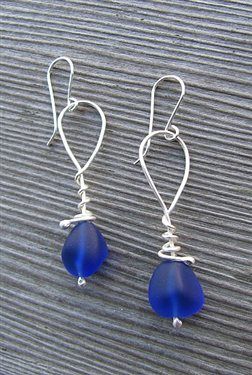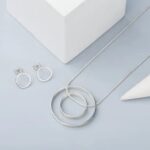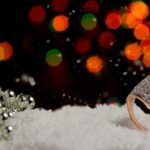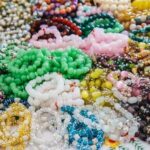Diamonds have long been a symbol of luxury, elegance, and everlasting love. Their sparkling beauty and timeless appeal have made them highly desired by jewelry enthusiasts all over the world.
However, with the rise of counterfeit diamond imitations in the market, it has become increasingly important for consumers to be able to distinguish real diamond jewelry from fakes. In this article, we will delve into the key indicators and techniques that can help you tell if your diamond jewelry is genuine or not.
Understanding the basics of diamonds is crucial when trying to determine their authenticity. The 4Cs – cut, color, clarity, and carat weight – are universally used to evaluate a diamond’s quality and value. Each of these factors plays a significant role in determining whether a diamond is real or fake. We will discuss how these characteristics are assessed and why they are essential in verifying the genuineness of diamond jewelry.
Professional jewelers employ various testing methods to determine if a diamond is authentic. These techniques include thermal conductivity tests, visual inspections using magnification tools, and even spectroscopy to analyze light absorption patterns. By familiarizing yourself with these testing methods, you will gain valuable insights into how experts confirm the authenticity of diamonds.
Spotting fake diamond jewelry can be challenging due to advancements in synthetic gemstone technology. Counterfeit materials such as cubic zirconia, moissanite, and white sapphires closely mimic the appearance of real diamonds but lack their unique properties. We will provide useful tips and tricks on how to identify these common imitations so that you can make informed decisions when purchasing or evaluating diamond jewelry.
As we continue through this article, we will also explore other aspects that contribute to determining the authenticity of diamond jewelry. Factors such as the sparkle and fire of real diamonds, craftsmanship quality, prong settings, certification from reputable grading authorities-all play an essential role in distinguishing genuine diamonds from imitations.
Armed with knowledge about how to assess the authenticity of diamond jewelry, you will be better equipped to make informed purchasing decisions and avoid being misled by counterfeit products. Let us now dive deeper into the world of diamonds and uncover the secrets that will help you tell real diamond jewelry apart from the rest.
Understanding the basics of diamonds
The 4Cs, including cut, color, clarity, and carat weight, are essential factors in determining the authenticity and quality of diamond jewelry. Understanding these basics can help consumers make informed decisions when purchasing or evaluating diamonds.
- Cut: The cut of a diamond refers to how well it has been shaped and faceted. It affects how the diamond interacts with light and determines its sparkle and brilliance. A well-cut diamond will reflect light internally and externally, creating a beautiful display of colors. On the other hand, a poorly cut diamond may appear dull and lifeless. The Gemological Institute of America (GIA) grades the cut on a scale from Excellent to Poor.
- Color: Diamond color is another crucial aspect to consider. While many people think that diamonds should be entirely colorless, that is not always the case. The GIA grades diamond color on a scale from D (colorless) to Z (light yellow or brown). Truly colorless diamonds are rarer and more valuable, but some diamonds with faint tints can still be beautiful.
- Clarity: The clarity of a diamond refers to the presence or absence of internal flaws (inclusions) and external blemishes. These imperfections can affect the overall beauty and durability of the stone. The GIA grades clarity on a scale from Internally Flawless (no visible imperfections under 10x magnification) to Included (diamonds with noticeable flaws). Diamonds with higher clarity grades are considered more valuable.
- Carat Weight: Carat weight measures the size or mass of a diamond. One carat equals 200 milligrams, and larger diamonds are generally more expensive due to their rarity. However, it is important to note that carat weight alone does not determine a diamond’s value; it is just one factor among others that contribute to its quality.
By familiarizing yourself with these 4Cs, you can evaluate diamonds more accurately. Keep in mind that the ideal combination of these factors ultimately depends on personal preference and budget. Having this knowledge will help you make an informed decision when purchasing or assessing the authenticity of diamond jewelry.
Some key points to remember about the 4Cs are
- Cut determines how well a diamond reflects light and affects its sparkle and brilliance.
- Color ranges from D (colorless) to Z (light yellow or brown), with colorless diamonds being more valuable.
- Clarity refers to the presence or absence of inclusions and blemishes, with higher grades indicating fewer imperfections.
- Carat weight measures a diamond’s size, but other factors also contribute to its value.
Therefore, when examining diamond jewelry, consider all four factors together rather than focusing solely on one aspect. This holistic approach will allow you to better assess the quality and authenticity of the diamonds you encounter.
The diamond testing methods
The diamond testing methods: Highlighting different techniques that professionals use to verify the genuineness of diamonds, including thermal conductivity, visual inspection, and spectroscopy
When it comes to determining the authenticity of diamond jewelry, professionals rely on various testing methods to ensure accuracy. These techniques are essential in verifying the genuineness of diamonds and providing customers with confidence in their purchases. In this section, we will explore some commonly used diamond testing methods employed by professionals.
- Thermal Conductivity: This method is based on the principle that diamonds conduct heat differently from other gemstones or imitations. Professionals use thermal conductivity testers to examine how quickly a stone disperses heat. Genuine diamonds have high thermal conductivity, meaning they rapidly dissipate heat. If a stone takes longer to disperse heat or does not conduct heat at all, it may indicate that it is not a real diamond.
- Visual Inspection: Professionals also rely on visual inspection techniques to identify real diamonds. They examine the stone’s physical characteristics using magnification tools such as loupes or microscopes. Features like facets, sparkle, and light reflection are distinctive qualities of genuine diamonds. Additionally, professionals inspect for any potential flaws or inclusions within the diamond as these can be indicative of its authenticity.
- Spectroscopy: Spectroscopy is another useful method used by experts to determine if a diamond is real or not. This technique analyzes the interaction between light and matter at various wavelengths. By examining how different wavelengths are absorbed and reflected by a stone, professionals can identify whether it is a genuine diamond or an imitation. Spectroscopy can also provide information about the presence of certain elements within the stone, which further aids in verification.
By employing these diamond testing methods – thermal conductivity, visual inspection, and spectroscopy – professionals can accurately assess whether a piece of jewelry contains real diamonds or not. Customers can rely on reputable jewelers who utilize these techniques to guarantee the authenticity of their purchases. It is important to note that these methods require professional expertise and equipment, therefore, testing diamond jewelry at home may not yield accurate results.
Spotting fake diamond jewelry
Understanding the characteristics of cubic zirconia
One of the most common counterfeit diamond imitations is cubic zirconia (CZ). This synthetic material closely resembles a diamond and can easily fool the untrained eye. However, there are several telltale signs that can help you identify it.
Cubic zirconia usually has a perfect clarity, meaning there are no flaws or inclusions inside the stone. Unlike diamonds, which exhibit unique internal characteristics known as inclusions, CZ may appear too flawless under close inspection. Another characteristic to look out for is the lack of color variations within the stone. Most diamonds display a range of colors due to their chemical composition, while cubic zirconia tends to have a consistent color throughout.
Another key indicator of cubic zirconia is its thermal conductivity. Diamonds possess a high thermal conductivity, meaning they disperse heat quickly when brought into contact with another object. You can test this by gently touching the stone against your lip or the tip of your tongue for a few seconds and then removing it abruptly. If it feels warm or cool to the touch, it’s likely not a real diamond.
Distinguishing characteristics of moissanite
Moissanite is another popular diamond alternative that can be mistaken for real diamonds due to their similar appearance and brilliance. To spot moissanite, pay attention to its fire or dispersion – how much spectral colors reflect from within the stone when exposed to light. Moissanite possesses even higher dispersion than diamonds, meaning it displays more colorful flashes.
Unlike diamonds that are formed deep within the Earth’s crust over millions of years, moissanite is created in laboratories using advanced technology. This means that moissanite will often demonstrate more clarity compared to natural diamonds. Use a loupe or magnifier lens to examine any visible imperfections or internal structures within the stone; if you find any, it is unlikely to be a moissanite.
Identifying white sapphires
White sapphires are another gemstone that can be easily mistaken for diamonds. They share some physical characteristics with diamonds, such as hardness and brilliance. However, there are certain features that can help differentiate between the two.
One important distinction is the price. White sapphires are generally less expensive than diamonds, so if you come across a piece of jewelry with an unusually low price tag claiming to contain diamonds, it’s worth investigating further. Additionally, white sapphires often lack the fire or dispersion that diamonds display when exposed to light. If you notice that the stone does not exhibit colorful flashes or has significantly less brilliance, it may be a white sapphire rather than a diamond.
By being familiar with these tips and tricks for identifying common counterfeit diamond imitations like cubic zirconia, moissanite, and white sapphires, you can avoid falling victim to scams or unintentionally purchasing fake diamond jewelry. Remember that seeking professional advice from trusted jewelers is always advisable when in doubt about the authenticity of a piece of diamond jewelry.
Assessing the diamond’s sparkle
The brilliance and fire of real diamonds are some of their most distinctive and alluring characteristics. Understanding these qualities can help you determine the authenticity of diamond jewelry.
Brilliance
Brilliance refers to the amount of white light that a diamond reflects back to the viewer. Real diamonds are known for their unparalleled brilliance, which is caused by their exceptional refractive index and cut quality. When light enters a diamond, it undergoes total internal reflection within the stone before being reflected back out.
This internal reflection creates a beautiful display of sparkle and brightness. To assess a diamond’s brilliance, hold it up to a well-lit area or under different lighting conditions and observe how it reflects light. Genuine diamonds will exhibit an intense and bright sparkle.
Fire
Fire refers to the ability of a diamond to disperse white light into its spectral colors, creating flashes of color as the stone moves. High-quality diamonds possess excellent fire, displaying vivid flashes of red, yellow, green, blue, and other colors when they catch the light from different angles. The dispersion of light depends on the diamond’s cut and its ability to break down white light into its individual spectral colors.
Distinguishing Characteristics
To differentiate between real diamonds and imitations like cubic zirconia or moissanite, pay attention to the intensity and quality of sparkle and fire. While fake diamonds may appear dazzling at first glance, they lack the same depth of brilliance that genuine diamonds possess. Imitations often produce more uniform flashes of color without the distinct spectral patterns found in authentic diamonds. Additionally, fake diamond alternatives might exhibit more ‘rainbow’ flashes rather than flashes in multiple colors.
To further examine a diamond’s sparkle and verify its authenticity, try moving the stone while observing how the light behaves inside it. If you notice distinct dots or black spots reflecting within or on top of the stone, it may indicate that you are dealing with a fake diamond. These dots or spots could be the result of low-quality facets or inclusions deliberately added on simulated stones to imitate real diamonds.
Remember, determining a diamond’s sparkle requires careful observation and comparison to recognize the unique brilliance and play of light that only real diamonds possess.
Examining diamond settings and craftsmanship
Craftsmanship and the quality of diamond settings are crucial factors to consider when examining the authenticity of diamond jewelry. The skill and precision with which a piece of jewelry is made can provide important clues about its genuineness.
One aspect to assess is the prong setting, which holds the diamond securely in place. In high-quality diamond jewelry, the prongs should be well-made and evenly spaced around the stone. They should also be sturdy enough to ensure that the diamond remains firmly set. Poor craftsmanship may result in uneven or weak prongs, which can put the stone at risk of falling out.
Another indicator of quality craftsmanship is the overall finish and detailing of the jewelry piece. Real diamond jewelry is often meticulously crafted, with attention paid to every aspect, including smooth edges, polished metal surfaces, and consistent design elements. Any signs of roughness, visible flaws, or inconsistencies in workmanship may suggest that the piece is not genuine.
It’s important to note that assessing craftsmanship alone is not sufficient for determining whether a diamond is real or fake. However, combined with other evaluation methods such as analyzing the 4Cs and conducting diamond testing methods mentioned earlier in this article, examining craftsmanship can help further confirm the authenticity of diamond jewelry.
| Indicators | Indication |
|---|---|
| Prong setting | Evenly spaced and sturdy prongs |
| Craftsmanship and Finish | Meticulous detailing, smooth edges, polished surfaces |
By carefully examining these aspects and combining them with other evaluation methods outlined throughout this article, individuals can gather a comprehensive understanding of how to tell real diamond jewelry from imitations or fakes.
The importance of certification
Certification plays a crucial role in ensuring the authenticity of diamond jewelry. Reputable diamond grading certificates provide buyers with vital information about the quality and characteristics of a diamond, giving them confidence in their purchase. These certificates are issued by independent gemological laboratories that specialize in evaluating and grading diamonds.
A reputable diamond grading certificate will include detailed information about the diamond’s 4Cs: cut, color, clarity, and carat weight. The cut refers to how well the diamond has been shaped and faceted, affecting its brilliance and sparkle. Color grade assesses the presence of any yellow or brown tints in a white diamond. Clarity grade evaluates the presence of any internal or external flaws, known as inclusions and blemishes respectively. Carat weight measures the size and weight of the diamond.
Having a certified grade for each of these factors allows buyers to compare diamonds accurately, ensuring they are getting what they pay for. It also provides a guarantee that the diamond has undergone an independent assessment by professionals trained in gemology.
When purchasing diamond jewelry, it is essential to look for certifications from well-known gemological laboratories such as the Gemological Institute of America (GIA), the American Gem Society (AGS), or International Gemological Institute (IGI). These organizations are renowned worldwide for their rigorous standards and reliable grading practices. Their certifications are widely recognized within the industry and offer reassurance to buyers.
| Reputable Diamond Grading Certificates | Certifying Organization |
|---|---|
| GIA Diamond Grading Report | Gemological Institute of America (GIA) |
| AGS Diamond Quality Document | American Gem Society (AGS) |
| IGI Diamond Report | International Gemological Institute (IGI) |
In addition to providing a comprehensive evaluation of a diamond’s quality, reputable certifications also serve as a form of protection for buyers. If there are any discrepancies or disputes regarding the authenticity or quality of the diamond, buyers can refer to the grading certificate as evidence and seek resolution through proper channels.
It is worth noting that not all certificates are created equal. Some unscrupulous sellers may provide their own certificates, which may be biased or unreliable. To ensure the legitimacy of a certificate, buyers should always check that it is from an independent and well-known gemological laboratory. Verifying the credibility of the grading organization is crucial in ensuring the accuracy and reliability of the information provided on the certificate.
Testing diamond jewelry at home
Testing the authenticity of diamond jewelry at home can be a helpful skill for individuals who want to verify their own pieces without relying solely on professional assistance. While it is important to note that these tests are not foolproof and should not replace the expertise of a gemologist, they can provide some initial insights into the authenticity of your diamonds.
One popular test that you can try at home is the fog test. Simply breathe warm air onto the diamond and observe how quickly the fog dissipates. Real diamonds have high thermal conductivity, which means that they disperse heat quickly and any fog on the surface will vanish almost immediately. On the other hand, fake diamonds or imitations such as glass will retain the heat from your breath, causing the fog to linger for longer periods of time.
Another simple test is the water test. Fill a glass with water and gently drop your diamond jewelry into it. Authentic diamonds have high density, so they should sink to the bottom of the glass instead of floating or hovering near the surface. If your piece stays afloat or hovers in the middle, it may indicate that it is not made of real diamond.
The newspaper test is yet another method you can use at home. Place your diamond on top of a printed newspaper with small letters and try reading them through the stone while looking down from above. Genuine diamonds have refractive properties that will make it difficult to read fine print through them because they reflect light so effectively. If you are able to read clearly through the diamond, it might suggest that it is an imitation.
It is important to note again that these tests are not conclusive evidence of a diamond’s authenticity, but rather serve as initial indicators to consider before seeking professional advice. If any doubts still persist after conducting these tests, it is recommended to consult with a reputable jeweler or gemologist who can provide further insights based on their expertise and specialized equipment.
Warning signs and red flags
When it comes to purchasing diamond jewelry, it’s important to be aware of warning signs and red flags that may indicate the jewelry is not genuine. These indicators can help consumers avoid falling victim to counterfeit or low-quality diamonds. One of the most common red flags is unusually low prices. If a diamond piece is being sold at a price significantly lower than its market value, it’s likely too good to be true.
Inconsistent information is another warning sign to watch out for. Reputable sellers should be able to provide consistent and accurate information about the diamond jewelry they are selling, including details about the 4Cs (cut, color, clarity, and carat weight) and any certifications or grading reports. If there are discrepancies in the information provided or if the seller is unable or unwilling to provide this information, it may be an indication that the jewelry is not genuine.
Another red flag is the lack of reputable sellers. It’s essential to buy diamond jewelry from trustworthy sources that have a solid reputation in the industry. Reputable jewelers will often have certification from well-known gemological laboratories like GIA (Gemological Institute of America) or AGS (American Gem Society). This certification ensures that the jewelry has been evaluated by professionals and meets high-quality standards.
Conclusion
In conclusion, this article has provided valuable information on how to tell real diamond jewelry from imitations. By understanding the basics of diamonds, including the 4Cs and the different testing methods used by professionals, readers can develop a discerning eye when it comes to authentic diamonds. They have also learned tips and tricks for spotting fake diamond jewelry, assessing the diamond’s sparkle, examining craftsmanship and settings, and the importance of certification.
It is crucial for readers to put their newfound knowledge into practice when purchasing or evaluating diamond jewelry. With so many counterfeits in the market today, being able to distinguish real diamonds from imitations will save individuals from making costly mistakes. The use of fog tests, water tests, and newspaper tests at home can provide additional assurance when assessing the authenticity of their jewelry.
Furthermore, it is important for readers to be aware of warning signs and red flags that may indicate a piece of diamond jewelry is not genuine. Unusually low prices, inconsistent information about the diamond’s characteristics or origin, and lack of reputable sellers are all indications that caution should be exercised before making a purchase.
By applying the information provided in this article and remaining vigilant when purchasing or evaluating diamond jewelry, readers can confidently make informed decisions. Whether it’s an engagement ring or a statement necklace, knowing how to tell real diamond jewelry ensures that individuals get what they pay for – an exquisite piece that will last a lifetime.
Frequently Asked Questions
Is there an app that can tell if a diamond is real or fake?
Yes, there are several apps available that can help differentiate between a real and fake diamond. These apps work by analyzing the unique properties of diamonds, such as their refractive index, thermal conductivity, and surface characteristics.
By using your smartphone’s camera or built-in sensors, these apps capture images or data from the diamond and run it through their algorithms to determine its authenticity. However, it is important to note that while these apps can provide a preliminary assessment, they are not foolproof and may not be as accurate as professional gemological testing.
How to check the quality of a diamond?
There are various ways to assess the quality of a diamond. One method is by examining the 4Cs: carat weight, color, clarity, and cut. Carat weight determines the size of the diamond, while color refers to its lack of color (colorless being more valuable).
Clarity relates to the presence of any internal or external imperfections (flaws decrease value), and cut determines how well the diamond reflects light (a well-cut diamond will have better sparkle). Additionally, assessing a diamond’s overall craftsmanship and understanding its grading certificate can also provide insight into its quality.
How can you tell if a diamond is real or cubic?
Distinguishing between a real diamond and cubic zirconia requires some observation skills. Cubic zirconia is a synthetic gemstone with similarities to diamonds but lacks their natural hardness and brilliance. A common method is to carefully examine the stone using magnification tools like a jeweler’s loupe or microscope since cubic zirconia typically exhibits visible flaws under close inspection while diamonds may appear flawless.
Additionally, you can test the gemstone’s density by measuring its weight in relation to its volume; cubic zirconia has a higher density than diamonds. Moreover, consulting with a professional jeweler or gemologist who can use specialized equipment such as thermal testers or ultraviolet light can yield more precise results in determining whether a stone is genuine or cubic zirconia.

Welcome to my jewelry blog! My name is Sarah and I am the owner of this blog.
I love making jewelry and sharing my creations with others.
So whether you’re someone who loves wearing jewelry yourself or simply enjoys learning about it, be sure to check out my blog for insightful posts on everything related to this exciting topic!





